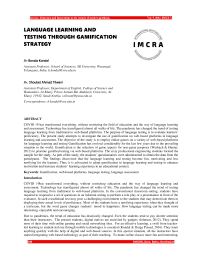Language learning and testing through gamification strategy
Автор: Bonala Kondal, Shouket Ahmad Tilwani
Журнал: Science, Education and Innovations in the Context of Modern Problems @imcra
Статья в выпуске: 3 vol.5, 2022 года.
Бесплатный доступ
COVID 19 has transformed everything, without restricting the field of education and the way of language learning and assessment. Technology has transfigured almost all walks of life. The pandemic has changed the trend of testing language learning from traditional to web-based platforms. The purpose of language testing is to evaluate learners’ proficiency. The present study attempts to investigate the use of gamification on web-based platforms in language learning and assessment. The objective of the study is to employ online games on a variety of web-based platforms for language learning and testing Gamification has evolved considerably for the last few years due to the prevailing situation in the world. Gamification is the selection of game aspects for non-game purposes (Werbach & Hunter, 2012) to promote gamified testing via web-based platforms. The sixty professional engineering students formed the sample for the study. As part of the study, the students’ questionnaires were administered to obtain the data from the participants. The findings discovered that the language learning and testing become fun, motivating and less terrifying for the learners. Thus, it is advocated to adopt gamification in language learning and testing to enhance motivation and increase students’ learning experience in an educational context.
Gamification, web-based platforms, language testing, language assessment
Короткий адрес: https://sciup.org/16010203
IDR: 16010203 | DOI: 10.56334/sei/5.3.35
Текст научной статьи Language learning and testing through gamification strategy
COVID 19has transformed everything, without restricting education and the way of language learning and assessment. Technology has transfigured almost all walks of life. The pandemic has changed the trend of testing language learning from traditional to web-based platforms. In the conventional classroom setting, students have required to respond to a set of questions in an informal setting to perform a role play or a presentation in front of the evaluator. In such a traditional test may pose a challenging environment to the students that may demotivate them in displaying their actual levels of proficiency. Most of the students have a terrifying experience when they thought of a test/exam, but the word game changes students’ mood to happiness. How language testing can be made more interesting, enjoyable and encouraging.
The survey on the use of video games found that people spend an average of six hours, 20 minutes each week playing games on the mobile (The State of Online Gaming-2020). The results of study designate that the games can keep players fascinated for hours without any break. The questions such as how could those games are converted into captivating for many people? What does it take for instructors to connect students to the way games employ their players? These questions lead to the term, gamification. Gamification refers to the culmination of game aspects in settings that are not games. The concept of gamification has started drastically in the realms of teacher professional development and online learning (Flores, 2015; Endarto, 2017). Different gamification strategies are used to gamify learning experiences for instance badges, leaderboards, challenges, levels, points, prizes, badges, scoreboards and feedback (Yildirim, 2017). In the context of teaching and learning, the gamification approach can be incorporated to the learners to make learning and testing in a more interesting way and effective manner.
Objective
Employing online games on a variety of web-based platforms for language learning and testing is the objective of the present study.
Research questions
The present paper converges on the impact of online games to assist in language learning and testing. The study ventures to retort the succeeding research questions
-
1. Can online games assist students to acquire language learning?
-
2. What are students’ perceptions on the employment of online games in language learning and testing?
It is hypothesized that the employment of online games would develop students’ proficiency and also projected that there would be assertive feedback from the students about the use of gamification in language learning and testing.
The Review of Literature
Web-based Games in Language learning
Gamification is momentous to formulate online tests more fascinating and motivating to the learners. Werbach & Hunter (2012) defined gamification as the application of game aspects in a non-game setting. The use of game aspects in language classrooms aids to develop thinking skills and mechanics for engaging and motivating students to promote learning and problem solving(Kapp, 2012).In a language learning context, Gamification is a novel concept, but it displays good prospects when it is implemented in the realm of language education. The learners assume themselves as players and strive to complete different levels in the game as the learning progresses. Students’ achievement in accomplishing a module/unit/task in learning a language is evaluated with their game playing experiences (Flores, 2015). Adopting the strategies and aspects of games in language learning and testing can escalate students’ motivation and develop their active participation in a variety of activities. Gamification demonstrated that the learners are encouraged and motivated when the strategy is employed properly in the classroom (Muntean, 2011;
Gamification Framework
The elements that make gamification may be categorized into two types. These are referred as underlying dynamics and surface elements provided in Figure 1.
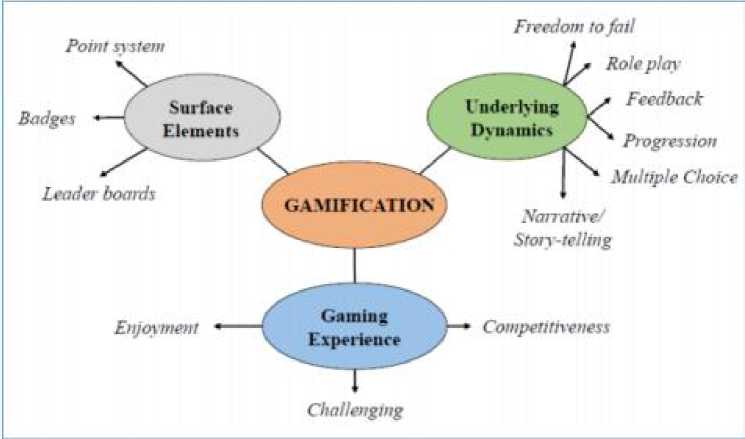
Figure 1: Gamification Framework (adopted from Langendahl, 2016)
Game design principles/underlying dynamics: game design doctrines such as goals or challenges, freedom to fail, personalization or narratives are the set of concepts that underpin specific game mechanics. Many are using in education and they are implemented successfully in gamified context where students receive immediately feedback (Dicheva et al., 2015).
Aspects of Gamification
Several possible game aspects can be used for gamification purposes in language instruction and assessment (Flores, 2015). These aspects include points, levels, quests/challenges, badges, rewards, avatars, achievements, leader boards, performance graphs, progression and epic meaning. These aid learners to be aggravated by the wisdom of accomplishment and wanted to be ahead of others. Games proved to be a paramount method to channel the desire to learn.
Advantages of Games
Web-based gamification in language learning
Monitoring Learning
Assessing and monitoring Gamified learning can be formed in different ways. Digital and non-digital artifacts such as communication transcripts, records, presentations and game logs can be employed as an alternative to record students’ performance in all the language skills. However, numerous web-based gamification online tools are accessible to provide their learners with readily reachable scores/summaries of their progress.
Gamification Platforms for language learning and testing
There are two types of gamifiying language learning and testing tools such as web-based games and web-based gamification platforms.
Web-based games
Mini-games and online puzzles: these games are productive in facilitating students’ progress, outside or inside the classroom. These promote simple player-game interactions providing with feedback immediately (Endarto, 2017).
It has been an overwhelming number of mini-games and online puzzles which are available for ESL learning. Some websites such as and , provide several puzzles and short games which are available online for free. Some games also provide information about the different levels of The Common European Framework of Reference for Languages (CEFR) and the required skills practiced.
Gamification platforms
There are an increasing number of web-based gamification platforms which are available for language teachers as an effective technique for developing learning procedures and encouraging learners. While using such gamification platforms in a classroom context, the language teachers should choose an appropriate platform based on their teaching approach/strategy and students’ learning objectives (Flores, 2015). The frequently used gamification online tools in L2 learning include Kahoot, Quizlet, Class Dojo, Ribbon Hero, Edmodo, Goalbook, Zondle, Duolingo, Socrative, Busuu, FlipQuiz, Memrise, Babbel, Mindsnacks.Inc and Brainscape.
Language Testing through Gamification
Gamification can be the solution to the conventional testing-related aspects which comprises low motivation and high anxiety. The participants must be provided a wide range of opportunities for playing with the target language unconsciously that they are being ranked (Brown, 2001).
Formal and informal assessments: According to the levels of formality, the language assessment can be divided into formal and informal assessments. It includes different forms such as unplanned, incidental responses and comments, training and other impromptu feedback to the students. It evaluates students’ learning behavior without any standardized tools. It can also be carried out by teachers by using the tools such as checklists/observations, portfolios by recording students’ gamified learning inside or outside the classroom. In contrast, formal assessments are specially designed to check students’ skills and knowledge. Teachers might design the testing tools for this kind of assessment using web-based gamification platforms or web-based games mentioned in the previous section. The selection of appropriate platforms is indispensable to match the learning objectives of gamification instruments. Many online gamified platforms automatically generate students’ test results which are readily available and accessed by the teachers.
Formative and summative assessments: Language testing can be categorized into two different groups such as formative and summative assessments. Formative assessment offers feedback directly to the learners to provide the information required for the improvement (Delacruz, 2010). Formative testing can be formally administered by a teacher in which they provide feedback on learners’ language proficiency and which support automatic feedback for learners. Summative testing can be conducted at the end of a unit/course to summarize what learners have secured and how well they have achieved the objectives. The teachers should choose web-based tools selectively to meet the learning objectives and able to include materials required throughout the course/unit. The use of rubrics in both formative and summative assessments plays a pivotal role in ensuring the relevance of learning objectives and gamified testing.
Methodology
Sample:
Sixty professional engineering students formed the sample of the present study. They registered for their technical undergraduate program in an English medium. Their age was between 18 and 20 years. Among them, there were N=23 female and N=37 male students.
A student’s questionnaire was administered among respondents to elicit the data to obtain information in a systematic and orderly manner on the elements and variables required to interpret the research questions. The data collection was conducted during everyday evenings in fixed timings for all without disturbing their regular classes during the day. The chief purpose of collecting quantitative data is to validate and reliable the responses of the students. The questionnaire converges on various aspects such as motivation, encouragement, collaboration, problem solving and language skills including speaking, listening, reading and writing.
The mixed approach (i.e. both quantitative and qualitative methods) was adopted for the analysis of the data.
Analysis of Data
Initially, students’ questionnaires were administered among the students for collecting the data. Later, the data was analyzed and interpreted.
Learning
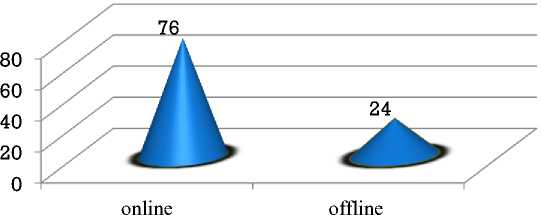
-
Figure 2: Mode of Learning
The majority of the respondents (i.e. 76%) stated that online learning was helpful than offline learning in the present scenario. It is indicated that online learning was more accessible in such situation to the students.
Did you enjoy playing games?
Not at all; 6
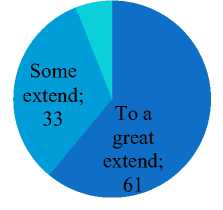
-
Figure 3: Playing games
The majority of the participants (i.e. 61%) expressed that they enjoyed learning language skills by playing online games to a great extend. 33% of the respondents stated that they enjoyed to some extend playing online games whereas 6% of them did not enjoy at all playing online games to learn language skills.
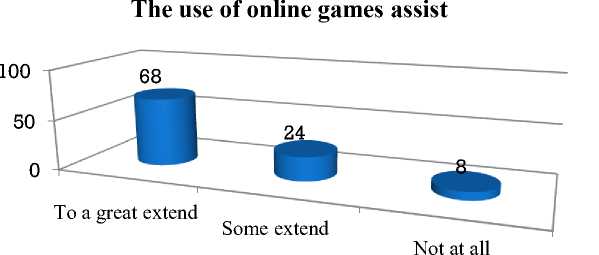
-
Figure 4: the use of online games
The majority of the respondents (i.e. 68%) mentioned that the application of online games sustains in learning to a great extend, 24% of the participants stated that online games help in learning to some extend whereas 8% of the respondents articulated that the use of online games, not at all helpful to the students.
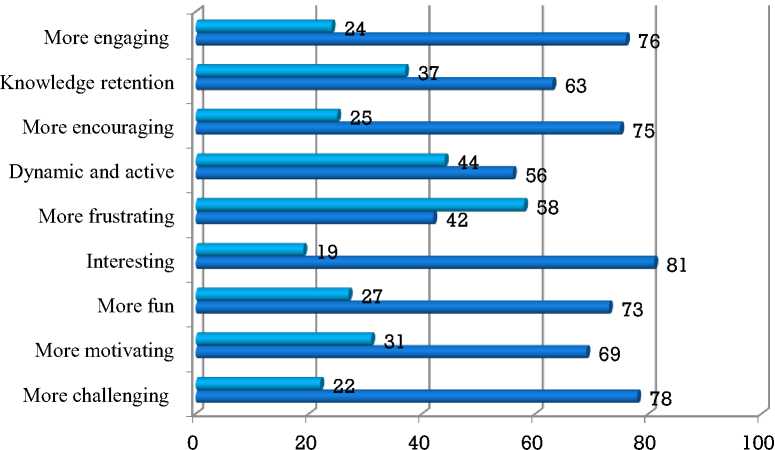
Figure 5: Language learning through playing games
It was found that learning language through playing games established that 81% of the participants expressed that learning through online games are more interesting whereas 19% of them stated that games were not interesting
Majority of the students (i.e. 78%) stated that learning a language through online games is more challenging to the learners whereas 22% of them stated that games were not challenging.
Seventy-six percent of respondents expressed that online games are more engaging with the content among the learners, in contrast 24% of them stated that games are not engaging with the content.
The majority of the students (i.e. 75%) stated that language learning through online games is more encouraging whereas 25% of them expressed that language learning through games is not encouraging.
The majority of the respondents (i.e.73%) expressed that learning a language through playing online games are more fun whereas 27% of them mentioned that playing online games is not fun activity. The incorporation of a gamification strategy can eliminate boredom and make the learning process more enjoyable (Varannai et.al, 2017).
The majority of the participants (i.e.69%) mentioned that online games in learning a language are more motivating. The use of gamification has displayed more motivation among the learners (Garland, 2015). In contrary, 31% of them expressed that games are not motivating.
The majority of the respondents (i.e. 63%) expressed that it assisted them in knowledge retention whereas 37%of them stated that games did not help them in knowledge retention.
The majority of the participants (i.e.56%) stated that learning a language with the help of online games is a dynamic and active process whereas 42% of the respondents expressed that learning language through playing online games is a more frustrating process to the learners. The analysis of the data indicated that learning language skills through online games is effective and simple for using a language.
How much did you learn with games
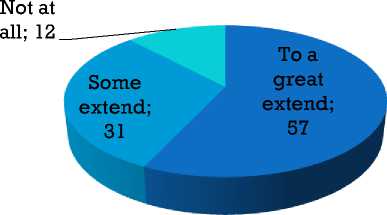
Figure 6: Learning with games
The majority of the participants (i.e. 57%) articulated that they earned to a great extent while playing online games and 31% of them mentioned that they learned to some extend through playing games whereas 12% of them did not learn anything at all while playing online games.
It was demonstrated that the majority of the students (i.e. 82%) expressed that using gamification offered students challenging tasks on different gaming platforms; on the other hand, 18%of them mentioned that it did not offer challenging tasks.
It was evident that 88% of the respondents expressed that the use of gamification in language learning and testing aids an opportunity in learning language skills effectively, whereas 12%of them stated that the technique didn’t assist them. Gamification is an ultimate option for developing language learning (McGonigal, 2011).
It was demonstrated that the majority of the participants (i.e. 89%) responded that the gamification technique makes language learning and assessment easier, funnier, enjoying and interesting, whereas a few (i.e. 11%) respondents expressed that the technique of gamification did not make language learning and assessment easier, funny and enjoyable.
It was found that 86% of the participants stated that the use of gamification provides an amicable learning atmosphere and it also provides productive feedback whereas 14% of them expressed that the technique did not provide an amicable learning atmosphere.
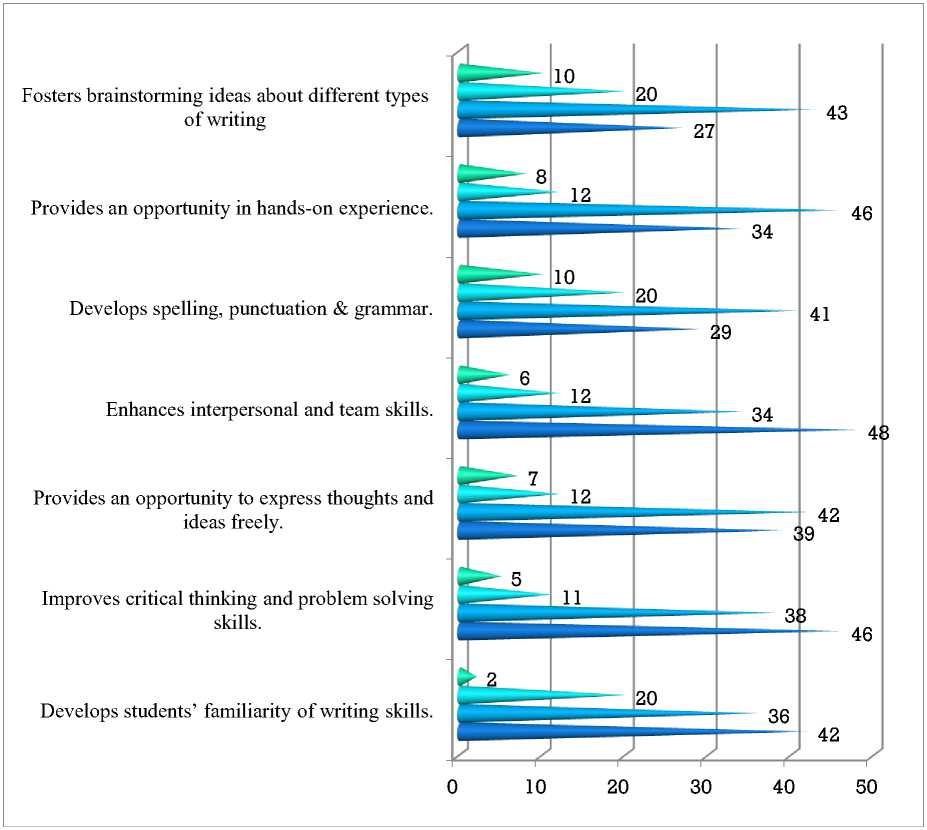
Figure7: Students’ perceptions about the application of online games in language learning and testing
The perceptions of the students were considered from very important to not important. In figure 7, it was exhibited that the views of respondents about the application of online games for language learning and testing had a positive effect. It was observed that 74% of the participants stated that gamification provides accelerated feedback on the learning whereas 26% of them expressed that the technique not assisted to provide feedback on learning. Thus, gamification provides accelerated feedback on language learning and testing.
It was evident that the majority of the respondents (i.e. 85%) expressed that the technique of gamification assisted low-level students to develop their language skills such as listening, reading and writing, whereas 14% of them expressed that the technique was not aided them to foster their language skills.
Findings and discussion
The results displayed that the possible use of gamification strategies in endorsing students’ motivation, engagement and performance primarily by accomplishing an amicable learning environment that affects how students learn. It was found that gamification can assistant to escalate participants’ competitive spirits and may develop learners’ cognitive and social growth.
Gamified activities provide external motivation factors, for instance badges, status, fame, money and praise. As a result, students anticipate that they should learn when they are ready with extrinsic motivation.
Playing online games may be seen as an antisocial activity because most of these games are often played in isolation. While performing the given task, the learners are required to use many kinds of skills and use their prior knowledge to establish the task. There is a possibility that some of the students may not be interested in games, hence they may feel anxious. The learners learn to play online games using the strategy of trial and error. This may assistant learners to become competent and independent learners. The learners should be provided adequate guidance by demonstrating the rules for playing online games so that students get awareness about using games. It was observed that there was an assertive response/attitude among the students in using online games in language learning.
Adequate technical support should be given to students to reduce their frustration while playing games and to become more active learners. They are motivated as well as engaged in the process of using games, therefore it promotes student-centered learning.
Gamification has been incorporated to make education more engaging and interesting. It assists learners to become more motivated in learning as they receive positive feedback from the game which stimulated them to learn. The use of gamification can make the learning process more interesting and engaging that can assist in developing students’ attention and persistence as well as their perceptions towards language learning (Lam, 2014).
With a well-planned game, students’ motivation, engagement and cognitive development can be developed. It is found that gamification could improve students’ perceptions about language learning and testing. There is an improvement in the communication abilities of the learners in using gamification as a strategy that assists to develop communication and transaction between the respondents inside/outside of the group (Osipov et al., 2015). However, gamification may have a negative effect on people with high motivation (Glover, 2013).
In the L2 classroom context, gamification develops the language skills that include listening, speaking, reading and writing as well as motivates collaboration and interaction. Gamification can devise behavior, enhance skills or involve people in innovation (Burke, 2012). The strategy of gamification is the integration of collaborative, creative skills, problem-solving skills, communication skills and leadership skills with a team spirit.
Conclusion
The study can be concluded that with the growing demand and importance of different web-based games and gamification platforms, it is easier for instructors to modify the nature of language testing that is demotivating, to a more interesting and arousing one. It also assists students to become more motivated towards learning because of positive feedback they receive from the games. As evidence has displayed, participants engage, collaborate, take part and experience novel thoughts and technology because of the use of gamification for meaningful learning. It also promotes competence in language skills among the learners. At last, gamification is a useful methodology/technique in generating positive results in the second language learning context.
More studies can be conducted on gamification to explore its effectiveness of learning and testing language among students. The present study is restricted to engineering students only, it can also be performed at large scale in other specializations. Further, the research may be carried out to discover other gamification approaches for the better experiences of students. Gamification can also integrated with any new technology and second language strategies to make learning more motivating and encouraging.

